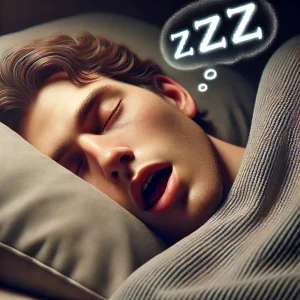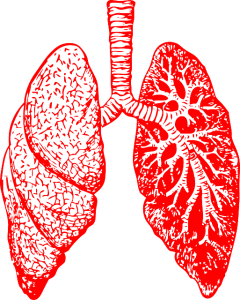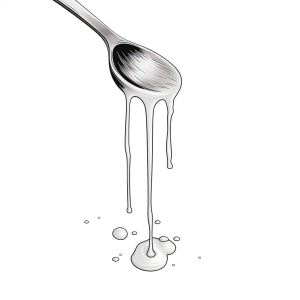This article does not provide medical advice
There is a connection between fatigue, sleep apnea, and driving collisions. Fatigue is a significant contributor to road accidents, with estimates suggesting it accounts for about 20% or more of collisions.
The challenge of accurately measuring fatigue’s impact is substantial since drivers are unlikely to admit to driving while tired. Additionally, certain road conditions—like monotonous highways—can exacerbate drowsiness even in well-rested individuals.
Sleep apnea disrupts sleep quality, leading to chronic daytime sleepiness that can severely impair driving ability.
The Relationship Between Sleep Apnea and Driving Risk
Sleep apnea creates a dangerous cycle that directly impacts driving safety. When breathing repeatedly stops and starts during sleep, the brain experiences micro-awakenings that prevent deep, restorative sleep. This fragmented sleep leads to excessive daytime sleepiness, impaired concentration, and slower reaction times—all critical factors for safe driving.
Research shows that people with untreated sleep apnea are 2-3 times more likely to have a motor vehicle accident compared to those without the condition. The impairment level has been compared to driving with a blood alcohol concentration above the legal limit in many countries.
Statistics on Sleep Apnea Prevalence and Associated Collision Rates
Sleep apnea affects approximately 4-9% of adults, with higher rates among men, older adults, and those who are overweight. However, it’s estimated that up to 80% of moderate to severe cases remain undiagnosed.
A landmark study published in the New England Journal of Medicine found that commercial drivers with untreated sleep apnea had a crash rate twice that of drivers without the condition. Another study from the American Academy of Sleep Medicine indicated that treating sleep apnea with CPAP therapy reduced collision risk by up to 70%.
Signs That Might Indicate Sleep Apnea is Affecting Someone’s Driving
Warning signs include:
- Frequent head nodding or difficulty keeping eyes open while driving
- Difficulty maintaining lane position
- Missing exits or traffic signs
- Having trouble remembering the last few minutes of driving
- Experiencing “micro-sleeps” (brief episodes of sleep lasting a few seconds)
- Near-miss accidents
- Finding yourself repeatedly hitting rumble strips on the roadside
Practical Solutions for Managing Sleep Apnea and Reducing Snoring
Effective interventions include:
Medical treatments
CPAP (Continuous Positive Airway Pressure) therapy remains the gold standard treatment, delivering air pressure through a mask to keep airways open during sleep.
Lifestyle modifications
Weight loss can significantly improve sleep apnea symptoms, as can avoiding alcohol before bedtime and establishing consistent sleep schedules.
Sleep position training
For some, sleeping on their side rather than back reduces apnea episodes.
Oral appliances
Mandibular advancement devices can help by positioning the jaw forward to maintain an open airway.
Surgical options
Various procedures can remove excess tissue from the throat or reposition the jaw to create more space for breathing.
Broader Public Health Implications of Untreated Sleep Disorders
The impact of sleep apnea causing fatigue while driving extends beyond individual risk to public safety and healthcare costs.
- The National Highway Traffic Safety Administration estimates drowsy driving costs society approximately $109 billion annually (not including property damage).
- Commercial transportation regulations now include screening requirements for sleep apnea in many countries.
- Healthcare costs associated with accidents caused by sleep-related fatigue represent a significant preventable expense.
- Campaigns raising awareness about sleep disorders could potentially save thousands of lives annually.
How to Identify If You Might Have Sleep Apnea
Sleep apnea often goes undiagnosed because many symptoms occur during sleep. Here are key indicators that might suggest you’re suffering from this condition:
Nighttime Symptoms
(Ask a sleep partner or use sleep recording apps)
- Loud, chronic snoring that may be interrupted by silence followed by gasps or choking sounds
- Witnessed breathing pauses during sleep
- Abrupt awakenings accompanied by shortness of breath
- Waking with a dry mouth or sore throat
- Nighttime teeth grinding (bruxism)
- Frequent trips to the bathroom during the night
- Night sweats unrelated to room temperature
Daytime Symptoms
- Excessive daytime sleepiness despite getting adequate hours of sleep
- Morning headaches
- Difficulty concentrating or remembering things
- Irritability, depression, or mood changes
- Falling asleep unintentionally during quiet activities
- Decreased libido or sexual dysfunction
Risk Factors to Consider
- Being overweight or obese (BMI over 25)
- Having a neck circumference greater than 17 inches for men or 16 inches for women
- Family history of sleep apnea
- Being male (though women’s risk increases after menopause)
- Being over 40 years old
- Having a small jaw, large tonsils, or nasal obstruction
Simple Self-Assessment
The STOP-BANG questionnaire is a simple tool used by medical professionals to screen for sleep apnea risk. Ask yourself:
- Do you Snore loudly?
- Do you often feel Tired during the day?
- Has anyone Observed you stop breathing during sleep?
- Do you have high blood Pressure?
- Is your Body mass index more than 35?
- Is your Age over 50?
- Is your Neck circumference greater than 16 inches (40cm)?
- Is your Gender male?
Answering “yes” to three or more questions suggests an increased risk of sleep apnea and warrants discussion with a healthcare provider.
When to Seek Medical Help
If you experience any combination of these symptoms, especially if you’re experiencing excessive daytime sleepiness that affects your driving, it’s important to consult with a healthcare provider. They may refer you to a sleep specialist who can arrange a sleep study (polysomnography) to confirm diagnosis.
Remember that many people with sleep apnea are unaware of their condition. Taking the initiative to get assessed could potentially save your life and the lives of others on the road.









